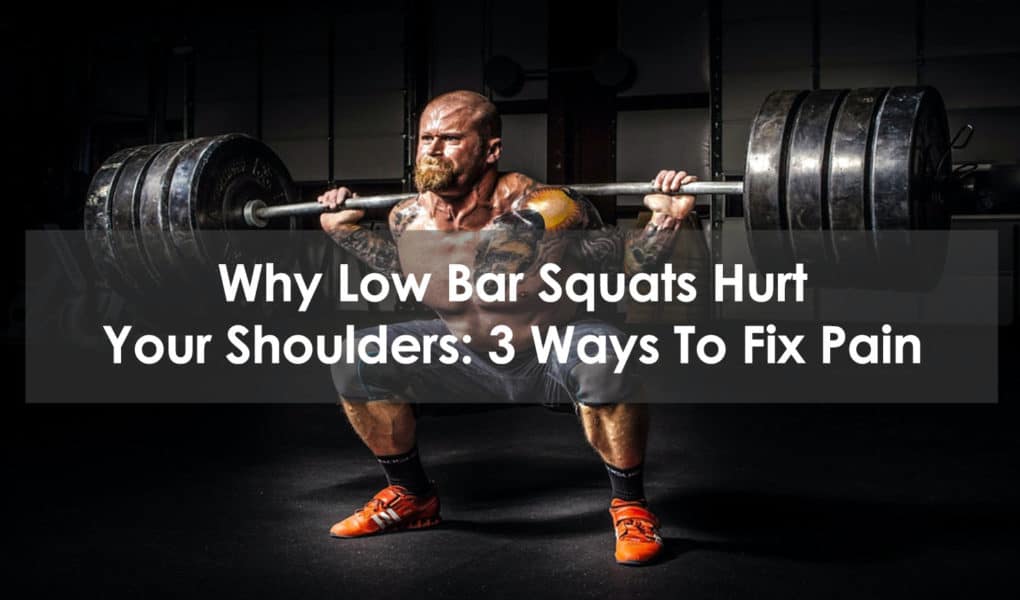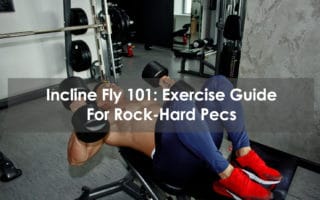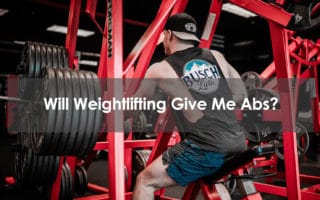There are three main reasons why low bar squats hurt your shoulders: your muscles are too tight, improper bar placement across the shelf of muscle across the back, and wrong hand placement. In this article, we’ll delve into each of these issues and show you what to do in order to fix the pain.
Why Do Low Bar Squats?
The low bar barbell back squat is a variation of the standard high bar barbell squat position. In this variation, the bar position is significantly lower. It is used by powerlifters. Here are four reasons that people prefer to low bar squat:
1. Posterior Chain Strength
Your posterior chain muscles are all those that run down the back of your body. When you have a low bar squatting position, you will more fully engage the entire posterior chain than when you have a high bar position. The stronger your posterior chain, the more powerful you will be in all three powerlifting moves; the squat, deadlift, and bench press.
2. Enhanced Mechanics
When you squat with a bar low, you are bringing the glutes and hamstrings more into the movement. Your glutes are the largest muscle in your body. So, it should come as no surprise that you will be able to lift more weight with a low bar squatting position.
3. Better for Beginners
The low bar squatting position is a better option for beginners because it does require as much ankle mobility as the high bar squat. New squatters often struggle with the mobility needed to get into the proper position and execute the exercise with good form.
4. More Comfortable
When you do the barbell back squat with the bar high, you will experience some amount of pain across the upper back. That’s why most gyms provide squat pads. But when you use a low bar style, the bar will rest along a natural shelf created between the trapezius and rear deltoids.
Causes of Pain
Muscle Tightness

When you perform a low bar squat, you are having to stretch your pectorals back a lot. If your pecs are tight, you will feel a stretch both through the clavicular pecs and the shoulders. That’s because we are not used to stretching our pecs in the low bar squatting position.
The more you do the low bar squat, the more flexible your pecs will become and the less tight your shoulder muscles will be.
Lack of shoulder mobility will also cause pain when doing the low bar squat. Your shoulder joint has to bend back in an unnatural external shoulder rotation position when you get into position for this exercise. If you improve your shoulder function, you will help to alleviate this problem.
Improper Bar Placement
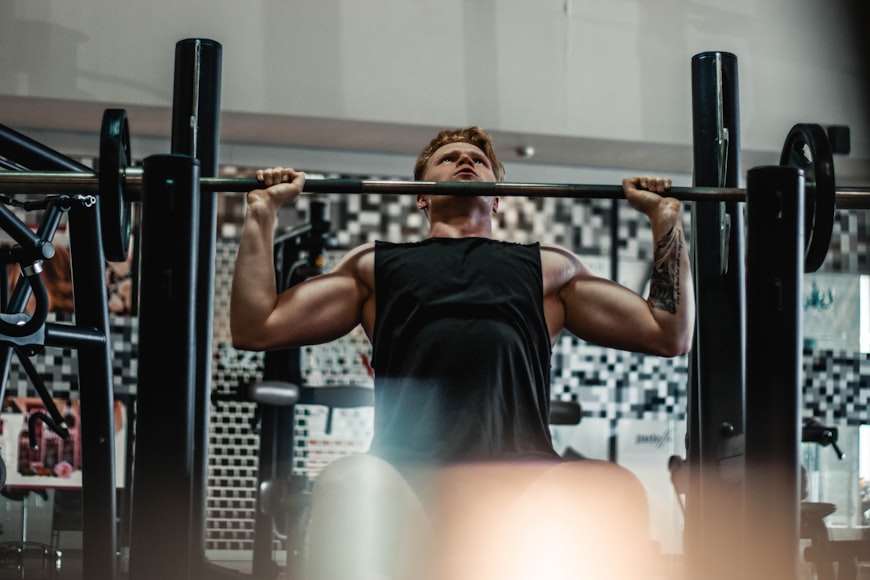
As already indicated, the ideal bar placement when you do the low bar version of the squat is on the shelf of muscle between your traps, scapulae, and rear delts. If you miss this correct position by going too low, you will over-stretch the pectoral and shoulder muscles. You will also find it difficult to control the bar, as it may have a tendency to roll down your back.
Wrong Hand Placement
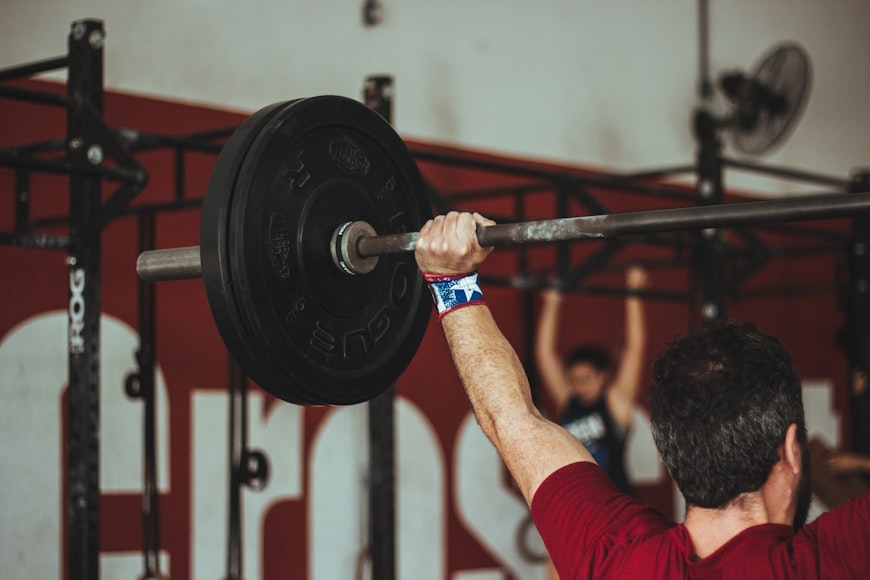
Many people position their hands too close in when in a low bar squat variation. Doing so increases the stretch on the pecs. You will have to experiment with how much you alter grip width for your own level for comfort, but generally the wider hand position the better. You should also use a cupping grip rather than a grasping one and maintain a neutral wrist position. In addition, you may want to experiment with a thumbless grip.
3 Ways to Decrease Your Pain
1. Enhance Your Mobility
The greater your mobility when you get under the squat rack, the less pain you will experience when squatting. Spending 5 minutes doing foam rolling exercises as part of a warmup will pay off big time. Place the foam roller on the floor on them perform full ranges of motion movements through your upper back muscles and your pectorals.
In addition to using a foam roller, I also suggest using a tennis ball to do some targeted work on your pectoralis minor muscle.
2. Dynamic Stretches
Dynamic stretching involves moving a muscle group through its full range of motion. You can do this with the assistance of a resistance band. Here are a couple of dynamic stretches to increase flexibility in the rotator cuff muscles.
Stand with a band in your hands and stretch your arms out in front of your body to full extension. Now lift your arms directly up overhead and stretch back with your arms straight and hold for 1-2 seconds.
Do 3 sets of 10 reps.
Next, grab a light weight and perform the Cuban Press by starting with the weights held at shoulder levels with your elbows at a 90-degree angle. Now press the weights directly up to full arm extension. Lower and repeat.
Do 3 sets of 15 reps.
3. Boost Your Flexibility
We have identified tight muscles in the pectorals as the most important muscle when it comes to reducing pain in the low bar squatting exercise. So, it makes sense to work on increasing the flexibility of your pecs. The best exercise to do overcome tight muscles is the Pectoral Stretch against a wall. Here’s how to do it:
- Stand in a doorway with your right arms held at shoulder level and a 90-degree elbow bend.
- Now place the forearm of your right arm against the door frame.
- Take a staggered stance with your left foot forward and press the right palm and forearm against the wall.
- Turn your body to the left to extend the stretch. Hold for 5 seconds.
- Relax and repeat.
- Do 10 reps on each side.
Conclusion
You will not get rid of shoulder and pec pain from the low bar squat overnight. However, if you include the three suggestions provided here to your squat workout routine, you will, over a period of weeks, less and eventually get rid of that pain, allowing you to make full use of the low bar squat exercise.
Frequently Asked Questions
Why do low bar squats hurt my wrists and cause elbow pain?
The reason that low bar squats will hurt your wrists and/or cause elbow pain is that you have a too narrow grip. Doing so will force an unnatural internal rotation of the wrists. To prevent this, you should have a wider grip. Experiment with your wide handgrip to find out which is most comfortable for you.
Another possible cause of wrist pain during this exercise is that you are grasping the bar too hard. You only need a light hold onto the bar to offer support. Loosen your grip and you will have less wrist pain.
Can you lift more weight when you do the low bar squat?
Yes, you can lift more weight when doing the low bar squat. The lower bar position will more fully activate the posterior chain muscles, including the glutes and hamstrings. Most people will find that they can lift an extra 10-15 percent of weight when doing the low bar compared to the high bar squat.
